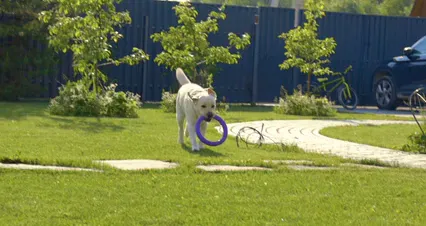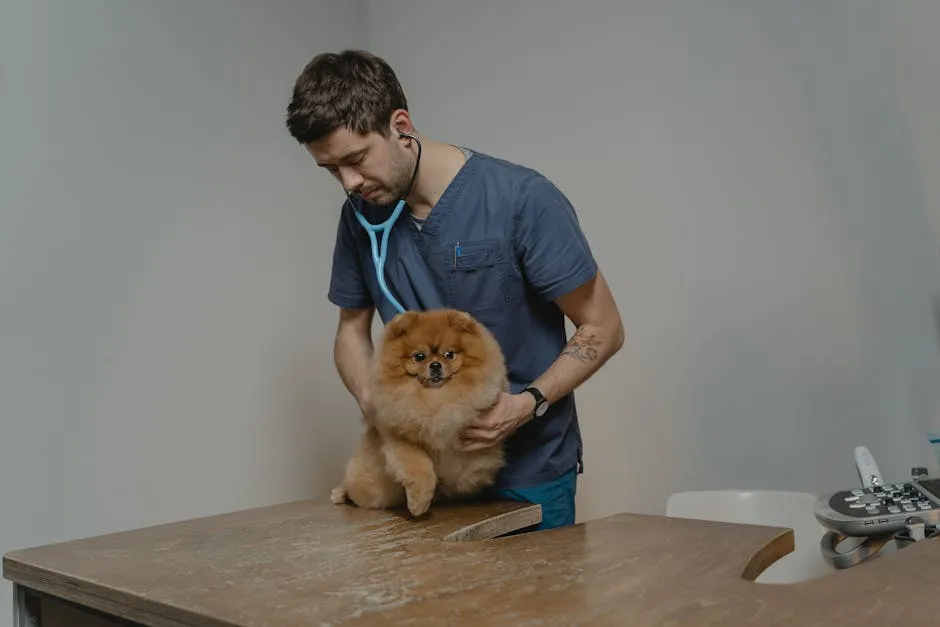
Why Do Dogs Chase Their Tails?
Introduction
Have you ever watched your dog spin in circles, trying to catch its tail? It’s a common sight! This behavior can be playful and entertaining, especially in young pups. However, tail chasing can also become compulsive. Understanding why dogs chase their tails is essential for every pet owner.
Speaking of playfulness, keeping your dog mentally stimulated is key! Consider getting an Dog Puzzle Toy. These toys can keep your pup engaged and reduce boredom, making tail chasing a thing of the past!

Summary and Overview
Tail chasing is a behavior many dog owners witness. For puppies, it often represents pure fun and curiosity. Yet, for adult dogs, tail chasing might signal deeper issues. It’s crucial to monitor this behavior. If it becomes excessive, it could indicate boredom, anxiety, or even health concerns. In this article, we will cover various reasons behind tail chasing, from playful antics to potential medical issues, helping you understand your furry friend better.
Understanding the importance of addressing anxiety in dogs is vital. why are coping strategies essential for handling anxiety in daily life
To keep your dog happy and healthy, consider investing in an Interactive Fetch Toy. It’s a fantastic way to engage your dog in active play and can help prevent them from developing compulsive behaviors.

Understanding Dog Behavior
The Nature of Playfulness
Have you ever watched a puppy spinning around, trying to catch its tail? This behavior is often a sign of pure joy and curiosity. Young dogs, especially puppies, are naturally playful. They explore their surroundings and their own bodies, making tail chasing a fun activity.
You might notice your pup engaging in other playful behaviors too. They may leap, bark, or wag their tails excitedly. These actions are all part of their exploration and playfulness.
However, it’s essential to keep these playful moments in check. Mental and physical stimulation are crucial to prevent boredom. Regular walks, fetch sessions, or interactive toys can keep your dog entertained. When dogs have enough activities, they are less likely to chase their tails out of boredom.
For those long walks, make sure you’re equipped with a sturdy Dog Leash with Reflective Stitching. Safety first, right? This ensures you and your furry friend can enjoy those adventures together without a hitch!

Attention-Seeking Behavior
Sometimes, dogs chase their tails to grab their owners’ attention. If your furry friend spins around and you laugh or react, they learn that this behavior gets them noticed. Even a stern “no” can reinforce their actions, as they still receive attention.
It’s vital to understand this dynamic. If you want to change their behavior, try to ignore the tail chasing. Instead, encourage alternative attention-seeking behaviors. For instance, teach your dog to bring you a toy or sit for a treat. This way, they learn that other actions can earn your affection. By redirecting their focus, you can reduce tail chasing and foster healthier interactions.
Boredom and Lack of Stimulation
Boredom is a common reason why dogs chase their tails. When dogs lack physical activity or mental engagement, they often seek entertainment in unusual ways. Tail chasing can become their self-made amusement, especially if they’re left alone for long periods.
Regular exercise is vital for your furry friend. Daily walks, runs, or play sessions keep them active and happy. Mental stimulation is just as important. Puzzle toys, training games, or even hide-and-seek can pique their curiosity.
Try incorporating fun activities into your dog’s routine! You could set up an obstacle course in your yard or take them to the dog park. Engaging with your dog regularly will help reduce tail chasing behavior. Remember, a well-stimulated dog is a content dog!
And speaking of fun, why not treat your furry friend to some Dog Treats for Training? These will not only motivate your pup during training sessions but also keep them happily engaged!

Medical Issues
Physical Ailments
Sometimes, tail chasing signals underlying medical problems. Common physical issues include fleas, which cause itching, or anal gland problems that create discomfort. Tail injuries can also prompt this behavior as dogs try to relieve pain.
Watch for signs that warrant a vet visit. If your dog suddenly starts chasing its tail or shows persistent discomfort, consult your veterinarian. Symptoms like excessive licking, swelling, or redness around the tail area also require attention. Early intervention is essential in addressing any potential health concerns.

Neurological Disorders
In some cases, tail chasing is linked to neurological disorders. Canine Compulsive Disorder (CCD) is one such condition. Dogs with CCD may engage in repetitive behaviors, including tail chasing, similar to obsessive-compulsive disorder in humans.
Look for symptoms that indicate a need for professional assessment. If your dog appears disoriented, excessively fixated on its tail, or exhibits changes in behavior, it’s time to consult a vet. Early diagnosis can lead to effective treatment options, improving your dog’s quality of life.
Anxiety and Stress
Anxiety can often manifest as tail chasing in dogs. When they feel anxious, some may turn to this behavior for relief. Factors like loud noises, changes in routine, or even separation from owners can trigger anxiety.
If your dog shows signs of nervousness, it’s vital to address the root cause. You can create a calming environment by providing a safe space with their favorite blanket or toys. Regular exercise is crucial too! Keeping them active can reduce anxiety levels significantly.
Consider engaging in training sessions. Positive reinforcement can help build their confidence. If anxiety persists, consulting a veterinarian or a dog behaviorist might be necessary. They can offer tailored strategies to help your furry friend cope better.

Breed Susceptibility
Certain dog breeds may be more prone to tail chasing. Breeds like Bull Terriers and German Shepherds are particularly known for this tendency. These dogs often exhibit compulsive behaviors due to genetic factors.
Genetics can play a significant role in their predisposition. Some breeds may have inherited traits that make them more likely to chase their tails. High-energy dogs, for instance, may need more stimulation to prevent boredom, which can lead to this behavior.
If you have one of these breeds, it’s essential to provide mental and physical enrichment. Engaging activities can help minimize tail chasing and keep your dog happy and healthy.

Treatment and Management Strategies
Behavior Modification Techniques
To discourage tail chasing, training and redirection are effective methods. Start by teaching your dog basic commands, like “sit” or “stay.” When they begin to chase their tail, redirect their attention to a toy or another activity.
Consistency is key in training. Make sure to reward your dog whenever they engage in positive behavior instead of tail chasing. This way, they learn that good behavior brings rewards.
Additionally, avoid reinforcing the chasing behavior. Ignoring your dog when they chase their tail can help break the cycle. With patience and persistence, you can guide them toward healthier habits.

For added motivation during training, a Dog Training Guide Book can offer you great insights and techniques to effectively train your furry friend!
When to Consult a Veterinarian
It’s vital to know when to seek veterinary help regarding tail chasing. If your dog suddenly begins this behavior, or if it worsens, it’s time for a vet visit. Look for signs like excessive licking, swelling, or visible discomfort around the tail area. These symptoms could indicate pain or underlying health problems.
Also, if your dog seems to chase its tail compulsively, this could point to a behavioral issue. Early intervention is crucial for both health and well-being. Ignoring these signs can lead to more severe problems down the line, affecting your pup’s quality of life. So, if you notice changes, don’t hesitate—consult your veterinarian to ensure your furry friend stays healthy and happy.

Medication and Professional Help
In cases where tail chasing becomes compulsive, medication may be necessary. Vets may prescribe anti-anxiety or antidepressant medications to help reduce this behavior. These drugs often work best when combined with behavioral therapy.
Professional trainers and animal behaviorists can also play a key role. They help identify triggers and teach you how to redirect your dog’s focus. Engaging your dog in physical and mental activities can significantly reduce tail chasing. With proper guidance, you can effectively manage and modify this behavior, ensuring a happier, healthier life for your dog.

Conclusion
Understanding why dogs chase their tails is crucial for every dog owner. This behavior can signify playfulness, boredom, or even health concerns. By monitoring your dog’s actions and consulting professionals when needed, you can ensure their well-being. Remember, early intervention makes a difference! Observe your pet closely to promote their health and happiness.

If you want to keep your dog’s teeth in check, consider Dog Dental Chews to help maintain their oral hygiene!
Please let us know what you think about our content by leaving a comment down below!
Thank you for reading till here 🙂
All images from Pexels




